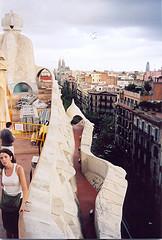Spanish amber in Spain there are located some 120 deposit of amber, most dating from the Cretaceous period. Of these, 8 contain bioinclusiones and are located mainly in the margins of the Iberian plate during the lower Cretaceous, associated with estuarine and deltaic media. Among the most important sites of Spain at this time highlight Penacerrada (Basque country and Burgos), San Just (Teruel) and El Soplao (Cantabria). Spanish amber hardness ranges between 2 and 2.4. Recent studies of amber from Spain have its beginnings in the mid-1990s when members of the Museum of natural sciences of alava discovered in Penacerrada (Alava) one of the most important sites in the world in Cretaceous amber inclusions. Since then other deposits have been found with inclusions, but so far Penacerrada is which has thousands of inclusions of arthropods. In 2005 a team of Spanish researchers and foreigners, directed from the University of Barcelona starts the multidisciplinary study of the deposits of amber in the Cretaceous of Spain, funded by the Ministry of science and technology.
Since then have been discovered and studied several sites, among which highlight the San Just in Teruel and the el Soplao in Cantabria, by its quality and abundance of fossilized specimens. In late July of 2008 a team of researchers from the Instituto Geologico y Minero of Spain, composed by Maria Najarro de la Parra and Idoia Rosales Franco, discovered a deposit of amber with insects of the Cretaceous unknown so far and an excellent condition in the environment of the cave of El Soplao, near the Cantabrian town of Rabago. In addition to tiny wasps, flies, bedbugs, spiders, cockroaches and mosquitoes sucking of blood fed itching to dinosaurs, amber the Soplao encloses a fabric of different spider which had already described in a deposit of Teruel and that aroused a great interest among scientists. It also contains fossil remains of coniferous and the fragment of the oldest blue amber which has been dated.
 Discover the Roman Barcelona, discover the medieval history of the city, or delve into the era of the modernist geniuses can do only in the city of Barcelona. The Catalan capital have so many beautiful buildings that you can not look up if you go through their most emblematic neighbourhoods: buildings that go from Gothic to modernist, archaeological remains and ancient Barcino, which there are still vestiges and which occupied practically the same extension of the Gothic quarter in the center of the city. This beautiful area near the Cathedral of Barcelona, can also be found official buildings of the Government of Catalonia and the Barcelona History Museum. The creation of l Eixample this period there are also significant improvements, since industry prospers economically and demographically, with what the medieval walls no longer serve to defend so many inhabitants in 1860,
Discover the Roman Barcelona, discover the medieval history of the city, or delve into the era of the modernist geniuses can do only in the city of Barcelona. The Catalan capital have so many beautiful buildings that you can not look up if you go through their most emblematic neighbourhoods: buildings that go from Gothic to modernist, archaeological remains and ancient Barcino, which there are still vestiges and which occupied practically the same extension of the Gothic quarter in the center of the city. This beautiful area near the Cathedral of Barcelona, can also be found official buildings of the Government of Catalonia and the Barcelona History Museum. The creation of l Eixample this period there are also significant improvements, since industry prospers economically and demographically, with what the medieval walls no longer serve to defend so many inhabitants in 1860,